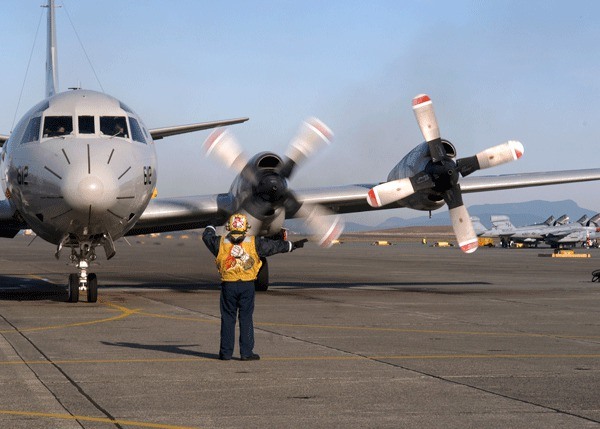The Navy’s announcement this week that Whidbey Island Naval Air Station will not be among the recipients of the new P8-A Poseidon jets has left many pondering an $87 million dollar question: What does this mean for the base’s existing P-3 squadrons and its 2,600 personnel?
Unfortunately, it’s an answer no one seems to know.
“We don’t know anything yet,” said Kimberly Martin, NAS Whidbey public affairs officer. “We haven’t received any official statement. … We’re waiting to hear just like everyone else.”
Base officials only learned of the news from a statement Congressman Rick Larsen released early Monday morning. It reported that the Navy has decided that Jacksonville, Fla. and Kaneohe, Hawaii would be the first two homes of the new P8-A Poseidon squadrons, which just last year had been promised to Whidbey.
“This was a difficult decision for the Navy,” Larsen said in the news release. “I am not happy about it.”
Larsen, a Second District Democrat and a member of the House Armed Services Committee, said the Navy believes the P8-A Poseidon – a submarine hunter and surveillance aircraft – should be stationed as far forward in the Pacific as possible.
The congressman added that he appreciated the strategy behind the decision but that he will “demand the full justification behind it.”
According to Larsen’s statement, basing the P8-A squadrons in Hawaii and Florida means those aircraft won’t be sent to NAS Whidbey to replace the base’s P-3 squadrons. The Navy had been planning to phase out the aging turbo-prop aircraft with squadrons of the newer P8-A jets, a transition that was expected to wrap up by 2020.
The airbase is by far Whidbey Island’s largest employer, with a workforce numbering 10,000 strong – that includes about 2,400 civilian employees. Its total economic footprint is estimated at about $575 million a year.
The base’s four existing P-3 squadrons, which represent about 2,600 jobs, are a big piece of that pie. According to Martin, their payroll alone is believed to dump roughly $87 million into the island’s economy every year.
But many Whidbey Island officials say it’s way too soon to panic. Oak Harbor Mayor Jim Slowik said he’s spoken with Larsen and that he got no indication that the Poseidon decision in any way threatens base’s existing P-3 squadrons, even though they’re destined for retirement.
“What’s good and isn’t being said is that the P-3s aren’t going anywhere,” Slowik said.
He also said that Chief of Naval Operations Adm. Gary Roughead’s term is nearly up and that a lot could change with new leadership and a shifting economy. Decisions made today can always be reversed later on, he said.
“This may be the initial cut, but it’s not the final cut,” Slowik said.
This would not significantly alter the message or focus of his trip to the Pentagon next month with city councilmen Jim Palmer and Danny Paggao. As they have for the past 19 years, the Oak Harbor contingent will remind the Navy’s top brass just how important the air base is to the community and the nation’s defense.
Island County Commissioner Angie Homola, who is chair of the board of commissioners, could not be reached despite requests for comment Monday and Tuesday.
According to Larsen’s staff, the congressman learned of the Navy’s change of plans from Roughead himself in an early Monday morning phone call. However, they could not confirm by press time just how the decision may affect the base’s P-3 squadrons.
Larsen did say in his press release that the Poseidon decision may only be temporary, and that P8-A squadrons may yet end up on the base sometime in the future. It’s an ideal location for the Navy for a variety of reasons, from the high quality of life and low cost of living the island provides to the wide access to good training ranges.
“Northwest Washington will continue to be an essential region for the U.S. Navy as the Navy has committed to keeping a carrier in Everett, expanding the Growler program at Whidbey, and considering future opportunities for P8-A squadrons to come to NAS Whidbey,” Larsen wrote.



